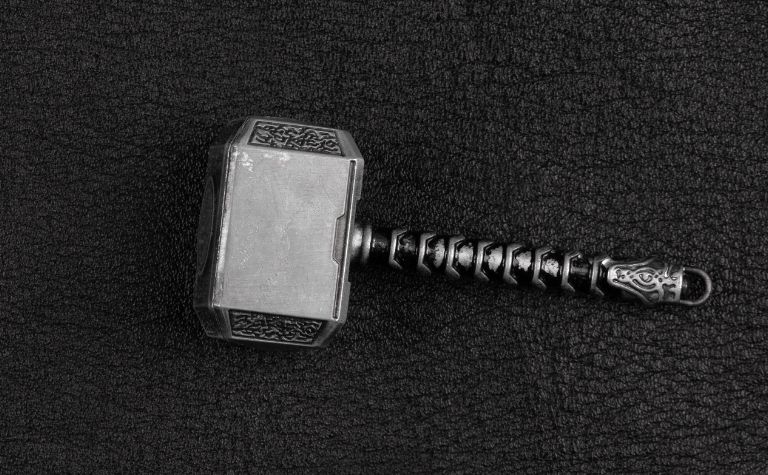Most people who appreciate Norse mythology know that it contains various gods and goddesses. They may even know about Ragnarok, Yggdrasil, Hel, and the nine worlds.
However, one lesser-known term that many people aren’t familiar with is Seidr.
Seidr, or Seiðr, is magic. Specifically, it’s a type of shamanistic magic that helps practitioners see and possibly affect the outcome of future events.
In Norse mythology, Odin is one of the practitioners of Seidr.
This article will fully define Seidr and explain how Odin learned it.
Furthermore, it will cover whether or not Loki or any other gods practiced Seidr and if the term appears outside of Norse mythology.
Also, see Did Norse Mythology Have Demons? to learn more.

What Kind of Magic Is Seidr?
The best and most concise definition of Seidr comes from the popular Norse mythology website Norse Mythology for Smart People. It defines Seidr as:
“A form of pre-Christian Norse magic and shamanism concerned with discerning the course of fate and working within its structure to bring about change, which was done by symbolically weaving new events into being. To do this, the practitioner, with a ritual distaff in hand, entered an ecstatic trance in order to be able to interact with the world of spirit.” [1]
However, one can further simplify the definition.
Seidr is ritualistic and shamanistic magic that grants knowledge of the future to people who practice it.
It also allows them, while in a trance-like state, to interact with the ethereal plane to potentially shape and change the future.
Both prophecies and curses are examples of Seidr magic.
In other words, Seidr is a type of divination.
However, it goes beyond the mere act of divining the future and includes the ability to impact it, as well. Other people might call it sorcery, witchcraft, or soothsaying.
During the Viking Age, Vikings considered Seidr a womanly art, which was shameful for men to practice. Men who did were argr or ‘unmanly.’
Many people find this ironic because Odin, the All-father, practiced Seidr.
Many Norsemen of the age did, too, and some were well-known for their prophecies and ‘magical’ abilities. Other Vikings and Norsemen likely ridiculed them to their faces.
However, that didn’t stop them from visiting when they needed help.
Also, see Norse Mythology vs. Celtic Mythology: Comparison to learn more.

Where Did Odin learn Seiðr?
Most people see Odin as the most powerful of all the Norse gods, and in many ways, that’s true. However, when it comes to Seidr, he had to learn about it from another god, and his powers were limited. [2] [3]
Odin learned Seidr from the Vanir goddess, Freya, who was a practitioner of the art herself. After learning the craft, he still isn’t the most powerful Seidr seer.
For example, in the Voluspa, he travels down Yggdrasil to consult a deceased Volva to learn the prophecy concerning Ragnarok.
Freya is, among other things, the goddess of magic. Therefore, it makes sense that she was the one who brought the art of Seidr to the Aesir.
The Eddas say that she taught Seidr to all the gods, though Odin and Frigg are the only ones noted as having the gift of prophecy. [4]

Does Loki Have Seiðr?
Loki has magical abilities. Some call them Seidr; however, his magic has nothing to do with prophecy.
Instead, he can shapeshift and is stronger than the average god. (He is not the strongest god, though.) For those who define Seidr simply as magic, then yes, Loki has Seidr.
However, most people agree that Seidr is a specific type of magic linked to prophesy and fate, abilities Loki doesn’t have. [5]
It’s actually possible that Loki’s strength and shapeshifting abilities come from his giant (Jotun) heritage, as many myths claim his mother was a giantess with magical powers.
Some tales even credit him with the ability to control fire, though this might have been a Christian adaptation to strengthen his comparison to the Christian devil.
Even so, one could argue that Loki’s magical abilities – especially those related to shapeshifting – allowed him to step in and change fate. In that case, his gifts could fall into the category of Seidr.
As is the case with most things in mythological studies, there’s no single, solid, correct answer to the question of whether or not Loki has Seidr.
Also, see Did Loki Kill Balder? to learn more.
Who Else Practiced Seidr in Norse Mythology?
In Norse mythology, Seidr was practiced by Odin, Frigg, Freya, and possibly Loki.
However, the most powerful practitioners of Seidr in Norse mythology were the Norns, the three goddesses (perhaps sisters) who controlled the fate of all beings.
Additionally, there are various Volvas and shamans, like the Volva Odin consults about Ragnarok, spoken of throughout the Eddas.
The Vikings, too, had their own Volvas and shamans. [6] The Seer in History’s Vikings is a great fictional example of one of these people.
The Vikings would visit these seers, prophets, and magic workers to learn their fates and attempt to change them.
They might even ask them for spells or curses or petition them to talk to the dead on their behalf.
Volvas were highly respected in Viking culture; people didn’t worship them, but they did revere them and treated them with the utmost respect and dignity.
Vikings were less awed by men who practiced Seidr, but they were too frightened of the male seer’s power to do much more than scoff quietly at them.
Is Norse Mythology the Only Place to Find Seidr?
Norse mythology isn’t the only place to find Seidr, though it primarily exists there. However, it actually predates the Vikings and remained popular throughout Scandinavia’s Iron Age and Viking Age.
It also appears in Saami mythology and still has some modern practitioners today.
Furthermore, the above examples include only places where this magic was explicitly called Seidr. [7] [8]
Other cultures from other times and ages have practices similar – or even identical – to Seidr, though they may call them by other names.
Final Thoughts
In Norse mythology, Seidr is a type of magic concerned with fate and prophecy. However, it’s possible other magical abilities were defined under the term.
Also, see Is the Tesseract in Norse Mythology? to learn more.
References:
[1] Source
[2] Source
[3] Source
[4] Source
[5] Source
[6] Source
[7] Source
[8] Source
